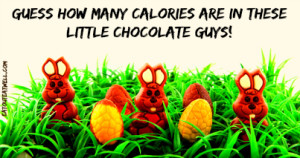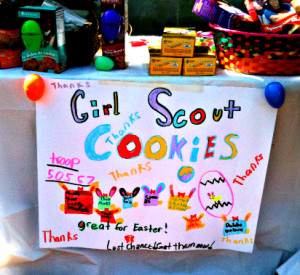 Easter bunnies made of chocolate aren’t really that old a tradition, having been born in Germany in the 1800’s. Although other types of Easter candy like Peeps, jellybeans, and Cadbury eggs are extremely popular, the National Confectioners Association says that on Easter children head for chocolate Easter bunnies first. Adults probably do, too.
Easter bunnies made of chocolate aren’t really that old a tradition, having been born in Germany in the 1800’s. Although other types of Easter candy like Peeps, jellybeans, and Cadbury eggs are extremely popular, the National Confectioners Association says that on Easter children head for chocolate Easter bunnies first. Adults probably do, too.
Chocolate Easter eggs are even younger than the chocolate bunnies. John Cadbury made the first French eating chocolate in 1842, but the first Cadbury Easter eggs didn’t arrive until 1875 and were a far cry from today’s Cadbury Crème egg. Now there are tons of different types of chocolate eggs: solid, hollow, and with all kinds of fillings.
Here are the average calories in popular types of chocolate Easter eggs:
Hershey’s
- Cadbury Chocolate Crème Easter Egg, 1 egg (39g): 180 calories, 8g fat, 25g carbs
- Cadbury Crème Egg, original milk chocolate with soft fondant crème center, 1 egg (39g): 170 calories, 6g fat), 28g carbs
- Cadbury Mini Eggs, 1 package (1.4 ounces): 190 calories, 9g fat, 27g carbs
- Cadbury Mini Caramel Eggs, 4 pieces (1.3 ounces): 180 calories, 9g fat, 23g carbs
- Cadbury Mini Egg, 12 eggs (40g): 200 calories, 9g fat, 28g carbs
- Milk Chocolate (foil) Eggs, 7 pieces (1.4 ounces): 200 calories, 12g fat, 24g carbs
- Candy Coated Eggs, 8 pieces (1.3 ounces): 180 calories, 8g fat, 27g carbs
Dove
- Silky Smooth Milk Chocolate Eggs, 6 eggs: 240 calories, 14g fat, 26g carbs
- Foil Dark/Milk Chocolate Eggs, 6 eggs (1.5 ounces): 230 calories, 14g fat, 26g carbs
Reese’s
- Milk Chocolate and Peanut Butter Eggs, 5 pieces (38g): 190 calories, 12g fat, 21g carbs
- Reese’s Pastel Eggs, 12 pieces (1.4 ounces): 190 calories, 8g fat, 25g carbs
- Reese’s Giant Peanut Butter Egg (whole egg, 6 ounces): 880 calories, 52g fat, 100g carbs
M&M’s
- Milk Chocolate Speck-Tacular Eggs: 1/4 Cup (12 pieces): 210 calories, 10g fat, 29g carbs
- M&M’s Peanut Butter Eggs, ¼ cup: 220 calories, 13g fat, 23g carbs
- M&M’s Pretzel Eggs, ¼ cup: 180 calories, 6g fat, 28g carbs
Snickers
- Original Peanut Butter Egg (1.1 ounce): 160 calories, 10g fat, 18g carbs
- Snickers Mini Filled Egg (0.9 ounce): 130 calories, 6g fat, 17g carbs
Russell Stover
- Caramel Egg (1 ounce): 130 calories, 6g fat, 19g carbs
- Truffle Egg (1 ounce): 140 calories, 8g fat, 15g carbs
Whoppers
- Robin Eggs, 8 pieces (1.4 ounces): 180 calories, 5g fat, 3g carbs
- Mini Robin Eggs, 24 pieces (1.4 ounces): 190 calories, 5g fat, 35g carbs
Nestle
- Butterfinger Eggs, 5 pieces (1.5 ounces): 210 calories, 11g fat, 29g carbs
- Crunch Eggs, 5 pieces (1.3 ounces): 190 calories, 10g fat, 25g carbs
Here are the average calories in popular types of chocolate Easter bunnies:
- Solid Milk Chocolate Easter Bunny (2.5 ounces): 370 calories (average)
- Dove Solid Chocolate Easter Bunny, whole bunny (4.5 ounces): 675 calories
- Cadbury Solid Milk Chocolate Easter Bunny: 890 calories
- Lindt Dark/Milk Chocolate Bunny (1.4 ounces): 225 calories
- Sees Whole Bunny (4.5 ounces): 650 calories
- Reese’s Peanut Butter/Reester, whole bunny (5 ounces): 720 calories
- Russell Stover, whole bunny (4 ounces): 630 calories





